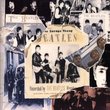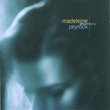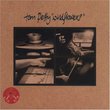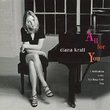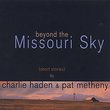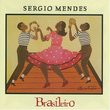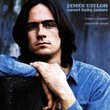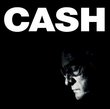| All Artists: Benny Goodman Title: Carnegie Hall Jazz Concert Members Wishing: 0 Total Copies: 4 Label: Sony Original Release Date: 1/1/1938 Re-Release Date: 11/2/1999 Album Type: Original recording reissued, Original recording remastered, Live Genres: Jazz, Pop Style: Swing Jazz Number of Discs: 2 SwapaCD Credits: 2 UPCs: 074646514320, 5099745098323 |
Search - Benny Goodman :: Carnegie Hall Jazz Concert
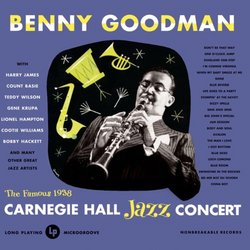 | Benny Goodman Carnegie Hall Jazz Concert Genres: Jazz, Pop
In jazz, live recordings not only document an artist or group's sound in its purest form but, in rare cases, herald the arrival of a musical genre. That's the case with this invaluable, two-CD collection that captures clar... more » ![header=[] body=[This CD is available to be requested as disc only.]](/images/attributes/disc.png?v=15401716) ![header=[] body=[This CD is available to be requested with the disc and back insert.]](/images/attributes/disc_back.png?v=15401716) ![header=[] body=[This CD is available to be requested with the disc and front insert.]](/images/attributes/disc_front.png?v=15401716) ![header=[] body=[This CD is available to be requested with the disc, front and back inserts.]](/images/attributes/disc_front_back.png?v=15401716) |
Larger Image |
CD DetailsSynopsis
Amazon.com In jazz, live recordings not only document an artist or group's sound in its purest form but, in rare cases, herald the arrival of a musical genre. That's the case with this invaluable, two-CD collection that captures clarinetist Benny Goodman's historic 1938 Carnegie Hall concert, which exemplified the so-called "swing era." Originally released in 1950, it contains rare commentary from Goodman and music from the entire event, which was a unique mix of formality and spontaneity. Goodman's perfect intonation and lyrical improvisation front the big band here, featuring the smooth solos of trumpeter Harry James, the percussive power of Gene Krupa--jumping the blues on "Don't Be That Way"--and the Fletcher Henderson- arranged "Sometimes I'm Happy" and "One O'Clock Jump." Another segment of the evening, called "Twenty Years of Jazz," takes Goodman to New Orleans with a lickety-split reading of "Sensation Rag" and "When My Baby Smiles at Me." A spirited jam session follows with Count Basie on the keys, alto, tenor, and baritone saxophonists Johnny Hodges, Lester Young, and Harry Carney, along with trumpeter Buck Clayton. Goodman hangs tough with the crew on a rollicking read of Fats Waller's "Honeysuckle Rose." The spotlight turns to Goodman's color-line breaking small combos. His trio with Krupa and the elegant, fleet-fingered Teddy Wilson on piano delivers a harmonically delicious version of "Body & Soul" that would give Coleman Hawkins's version a run for its money. When vibraphonist Lionel Hampton gets into the mix and makes it a quartet, the standards "Avalon," "The Man I Love," and "I Got Rhythm," as well as "Stompin' at the Savoy," are transformed into timeless vehicles of improvisation. The big band returns with growling grandeur on Irving Berlin's optimistic "Blue Skies" and the British Isle balladry of "Loch Lomond," with the majestic vocals of Martha Tilton. One listen to Goodman and company's rockhouse romp on "Sing, Sing, Sing" will testify to the success of this event, which still reverberates today. --Eugene Holley Jr. Similarly Requested CDs
|
CD ReviewsClassic Concert Jason Shumate | GA United States | 01/14/2000 (4 out of 5 stars) "Finally the complete concert is released on CD. I'm not a big jazz fan, but I bought the original CD issue of this in the 1980's and I bought this version. The new release contains the entire concert for this first time. Previous releases omitted 2 songs and edited the "Honeysuckle Rose" jam. This concert contains a lot of fantastic music and it shows off Goodman's best band at the height of their powers. As regards the sound quality, some are going to hate it. You need to remember that the original concert was recorded on state of the art 1938 technology, which meant it was recorded to lacquer disks, not vinyl tape, under what were essentially bootleg conditions. If anything, we should maybe be amazed that the sound is as good as it is. This reissue went back to the original "masters", which are the disks. The disks have tremendous surface noise - the original LP pressing probably wasn't that clean either. What is different about this is that the producers made no attempt to remove the surface noise because that would have removed part of the sound of the concert. They felt it was more important to preserve every note and nuance of the performance at the cost of having audible surface throughout the set. If you are expecting a clean, modern sounding recording, you will be unhappy with this. I compared my original CD to this one and this new release sounds more natural. It's clear that the original CD release (and probably the original LP) were tweaked a bit. The original CD sounds louder, but whoever produced it probably just turned up the volume and turned up the bass and treble to boot. Folks it's not going to get any better than this. Either you can live with the surface noise or you can't. If they had removed the surface noise and consequently some of the tonal frequencies at that range, some people would have flipped out at that, so either way someone is going to be unhappy. Finally, the liner notes, while informative, could have been better. We get a short teaser about how tracking down the original lacquer disks involved spurned lovers, gamblers, etc. but no details. Also, one of the liner notes writers blasts Goodman for asking a guitarist to solo in "Honeysuckle Rose", yet he admits that Goodman probably didn't realize that the man was not setup to play solo guitar. It seemed to me upon listening that Goodman was just trying to make sure that everyone had a chance to solo and had no sinister ulterior motive. If you want to see why Goodman was called the King of Swing and why this concert is so highly regarded you should buy this set." ...back into the noise debate. Tom | Pawtucket, RI | 01/20/2000 (2 out of 5 stars) "I wrote an earlier review and listed two problems with this CD. The first was the obvious surface noise. The second was the way that some tracks were abruptly chopped off. Since then, a few folks have risen to defend quality of this recording. Some of their reviews even seem to imply that dissatisfied listeners are somehow less astute than those who gleefully relish the crackles and pops. This is somewhat insulting, to say the least.Let's understand something, first and foremost - this show was one of the greatest music perfomances of all time - period. It is for precisely this reason that the CD set is so disappointing. Finally, modern technology meets timeless performance, and the result is NOT something akin to sitting in Carnagie Hall that night. It's exactly like what it is - a digital copy of a scratchy sounding acetate. Just as the music is more distinct, so is the surface noise. I can't help but wonder what the release would have sounded like if they'd have even TRIED to cut the noise a little. Alas, it may be another twenty years before somebody tries again. Yes, the release is a wonderful historic document that will continually warm the hearts of jazz scholars. It just would have been nicer to have a more listenable historic document for the rest of us.So what should a potential buyer do? I guess in the end, this release is a must-have. The performance is that fantastic. Just know that it doesn't have the clean sound that we've come to expect, and due to the way the cuts are done, it is not always as listener friendly as we would expect." Lose the noise, lose the music David Fletcher | Richmond, Virginia | 01/15/2000 (5 out of 5 stars) "I can't offer enough praise to Sony/Columbia Legacy for this outstanding remaster of the original acetates for Benny Goodman's Carnegie Hall Concert of January 1938. Critiques offered at this venue seem to concentrate on the obviousness of the surface noise present on the original transcription discs. Let me go on record as both a jazz afficianado/broadcaster and someone with experience remastering old discs, that there are some cases where you have to retain some noise to preserve an integral part of the music signal.I would rather hear the full mighty thwack and shimmer of Gene Krupa's drum kit with some intermittent surface crackle, than hear the event through the wooly gauze of "digital noise reduction." Such was the case of the '80's incarnation of this material on CD. And, in spite of assertions to the contrary, the original LP's of the early '50's were heavily filtered as well, with compressed dynamic levels to accomodate the restrictions of the vinyl groove.Now, content-wise, this is our first opportunity to hear ALL of the Carnegie material: all of the applause, Benny's onstage announcements, musicians setting up, even the foot-stomping of those fans who were seated onstage. Plus, the missing tunes that were originally cut from the LP production because of surface quality. Friends, this is as close as we'll ever be sonically to an event that occurred 62 years ago. I, for one, will quickly adjust to some surface crackle in order to experience the spine-tingling roar of the 1938 Goodman orchestra in full cry. Buy this CD set, read the liner booklet, and listen. THIS is the way it was."
|

 Track Listings (19) - Disc #1
Track Listings (19) - Disc #1